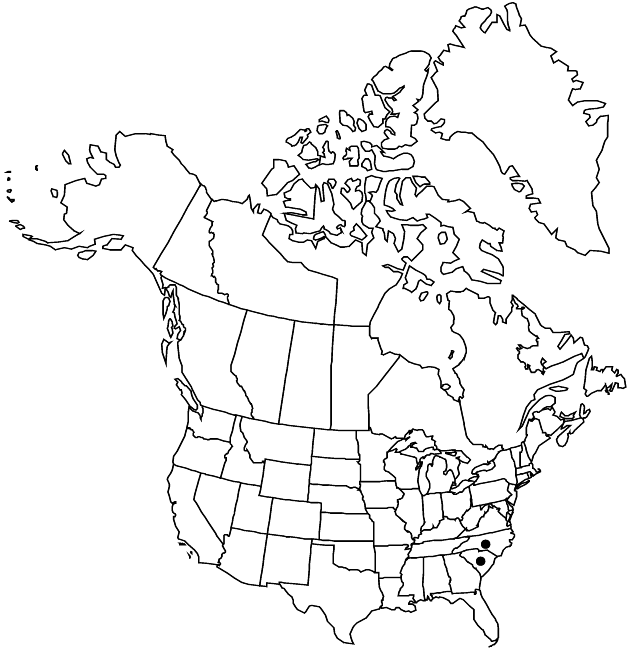Helianthus schweinitzii
Fl. N. Amer. 2: 330. 1842.
Perennials, 100–200(–300) cm (rhizomatous, producing tubers). Stems (often reddish, leafy) erect, ± strigose proximally, strigose or glabrous distally. Leaves cauline; opposite (proximal) or alternate; petioles 0–1 cm; blades (light to dark green, 3-nerved distal to bases) lanceolate to lance-linear, 6–18 × 1–2 cm, bases cuneate, margins entire or subentire (revolute), faces hirsute to tomentose and gland-dotted (abaxial) or scabrous (adaxial). Heads 3–6. Peduncles 1.5–8 cm (not gland-dotted). Involucres hemispheric, 9–10(–16) mm diam. Phyllaries 16–20 (reflexed or loose), lanceolate or lance-ovate, 5–7 × 1.5–2.3 mm, apices acute to acuminate, abaxial faces hirsute (proximally) to glabrate, gland-dotted. Paleae 5.5–6.5 mm, 3-toothed (apices hairy). Ray florets 8–15; laminae 15–22 mm (abaxial faces gland-dotted). Disc florets 40+; corollas 5–6 mm, lobes yellow; anthers dark brown to black, appendages dark or reddish brown. Cypselae 3–4 mm, glabrate; pappi of 2 aristate scales 1.5–2 mm. 2n = 68.
Phenology: Flowering fall.
Habitat: Clearings, woodland edges
Elevation: 20–100+ m
Discussion
Of conservation concern.
Helianthus schweinitzii is distinguished by its relatively small heads and sessile to subsessile, narrowly lanceolate leaves with revolute margins. Chromosome number, typification issues, and identification of voucher specimens were updated by J. F. Matthews et al. (1997).
Helianthus schweinitzii is found on the Carolina piedmont. It was listed as endangered in the Federal Register on May 7, 1991, and is known from 16 populations. It is in the Center for Plant Conservation’s National Collection of Endangered Plants.
Selected References
None.
